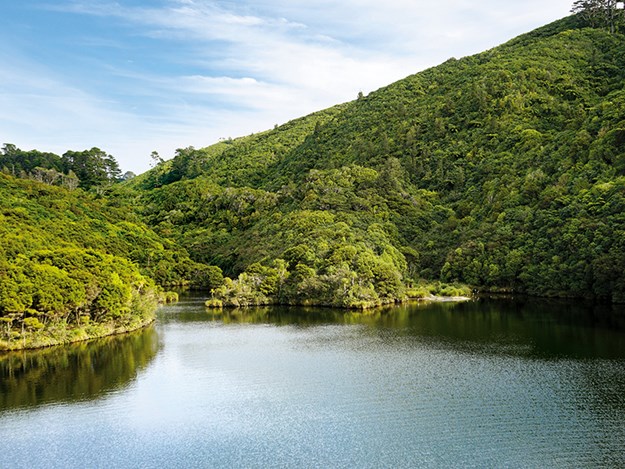 |
New Zealand at its natural best |
One of the things Gareth and I missed most about our time in lockdown was trees. Funny isn’t it, to miss such a small and simple thing so wholeheartedly? Living so freely for so long, we were used to being completely immersed in nature at every opportunity. A recent visit to Wellington provided us with the chance to do just that, and what an experience it was.
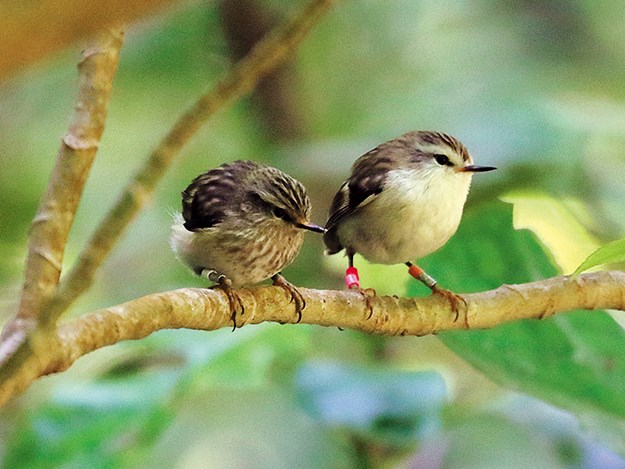 |
A rifleman with her chick |
Into the wild
Who would ever imagine that a whole other bountiful world of wildness could exist so successfully in the heart of a city? This is just what has been achieved, however, through the marvel that is Zealandia.
Zealandia is the world’s first fully-fenced urban ecosanctuary and is part of a 500-year vision to restore Wellington’s forest and ecosystems as closely as possible to their pre-human state. Set around a picturesque reservoir, it is home to some of New Zealand’s most rare and extraordinary wildlife.
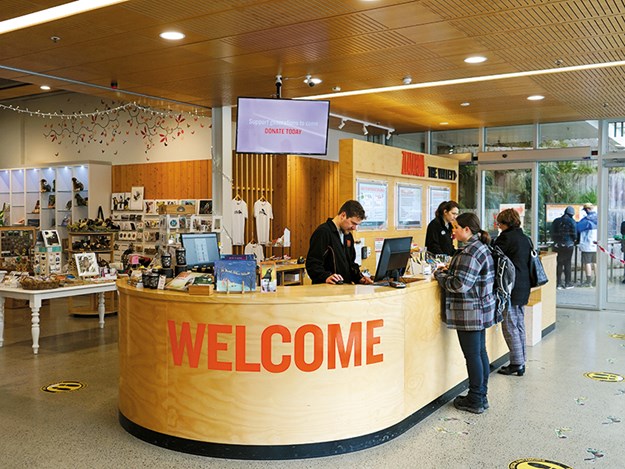 |
All visitors undergo a bag check for stowaway predators upon entering |
The day we arrived it was school holidays and the carpark was full. The walk up to the sanctuary was easy and enjoyable though, and as we approached we could already hear the cacophony of birdsong and see the increase in feathered friends accompanying us along the way. Despite the huge number of people visiting during peak time, the 500-acre sanctuary was by no means crowded and it was lovely to see so many families out enjoying nature. The sanctuary has scheduled feeding times for species such as the comical takahe and also offers guided walking tours. To see the wildlife at its natural best, however, we encourage you to veer away from the sealed paths and venture into the steeper walking tracks, deeper into the sanctuary.
Birds, bees and more
As we made our way along the track and found ourselves alone, it was as though we could literally hear the forest breathing. We followed the screeching sounds of the kaka and stopped to watch a saddleback – or tieke – close enough to touch, busy at his work on the forest floor. Chattering tuis and fantails kept us company throughout and you never knew when a friendly robin was going to appear.
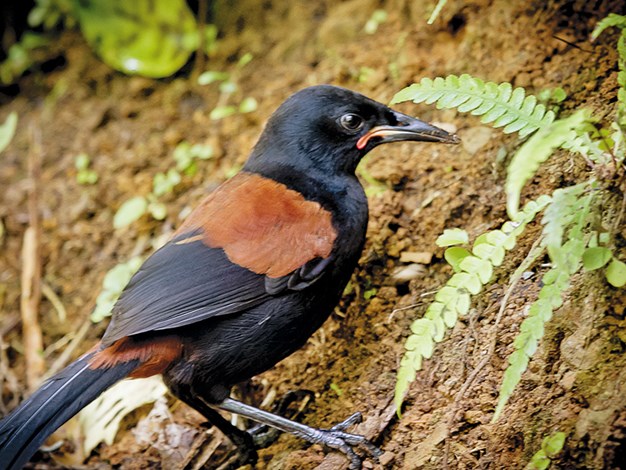 |
A saddleback |
There were a couple of memorable moments where we jumped out of our skin, too. At one stage we turned a corner and almost tripped over a kaka, who was completely unperturbed. Then Gareth popped his head into a bush to investigate the sound coming out of it, to have an enormous wood pigeon launch itself out of it at the same time!
Out of 40 different bird species recorded at the sanctuary, 24 are found in no other country. Zealandia is also home to geckos, skinks, wetas, frogs, kiwi and tuatara. This is wild New Zealand, as close as you can get.
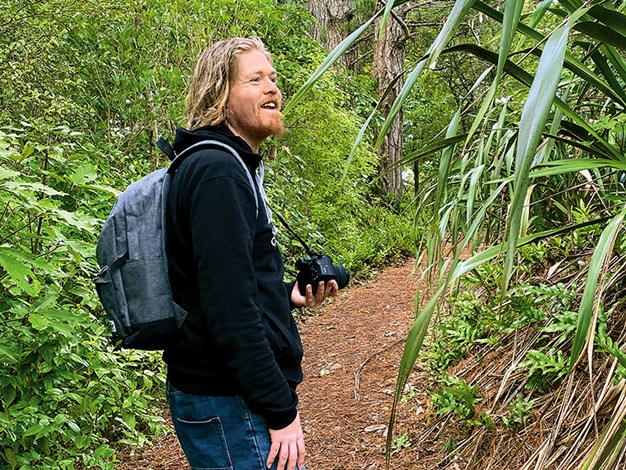 |
We were in our element being back in nature |
Protected treasures
The ecosanctuary is managed by the non-profit, community-led Karori Sanctuary Trust. This groundbreaking conservation project has reintroduced 18 species of native wildlife into the area, some of which had been absent from mainland New Zealand for over 100 years.
Zealandia provides a wistful glimpse of what our beautiful country was like before humans arrived to inhabit it, bringing predators with them in the form of rodents and mammals. Up until then, the only mammal our isolated and unique country was home to was a species of bat. Sadly, over the past 700 years, our native paradise has been almost destroyed, resulting in the extinction of more than 50 species of birds, along with several species of frogs, lizards, fish, and bats, to name just a few. While we can’t bring these back, it is vital we protect the ones we have from predators, and the team at Zealandia work tirelessly to make sure they are kept out, using traps and 8.6km of boundary fence.
The results of their labours speak – or screech – for themselves. Strolling through the sanctuary, one can’t help but try to picture New Zealand from centuries ago, and wish this protected piece of paradise still covered our whole land.
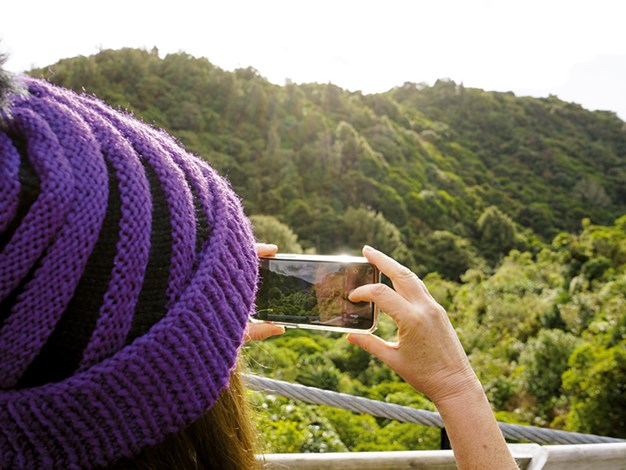 |
Zealandia is 500+ acres of lush vegetation |
You can't rush Paradise
Eventually we emerged back into civilisation and headed for the long swing bridge, which crosses the huge reservoir. This was a real highlight and we stood on the bridge for some time, taking in the view and the sheer wonder that is Zealandia. From there we continued to make our way to the kaka feeding station, where the native parrots compete with the cheeky tui for food. Bolshy they may be, but the tui are no match for the clever kaka, who are endlessly entertaining.
With so many varied trails to wander around, you can notch up several kilometres of walking no problem, but there are plenty of places to stop and take a break, including the Rata Cafe and the impressive and enormous visitors’ centre.
The sounds and sights of the forest were so enjoyable and refreshing, we didn’t want to leave. That would be our biggest recommendation when visiting Zealandia – don’t make it a flying visit (no pun intended). Pack a picnic and drinks and stay for the whole day – ideally a weekday when it’s quieter.
Give yourself time to just sit and watch in silence for a while, as long as you like, and allow the wildlife to come to you and the birds to venture down from the trees. We both agreed, as a kaka swooped high above our heads, screeching a farewell, that when we come back that’s exactly what we’ll do.
Even if you don’t have the luxury of time, however, and even if you were to visit and not see anything more exotic than a sparrow (though trust us, that won’t be the case), Zealandia is a fantastic place to spend a day. Who knows, maybe one day in the future, other areas will also take the initiative and more Zealandias will pop up over the country? That would be truly wonderful.
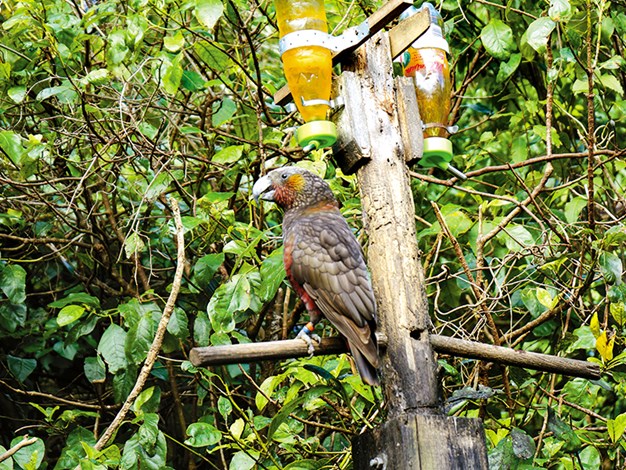 |
The kaka feeding station is always full of activity |
Get the most from your visit
Zealandia is an absolute ‘must-do’ when visiting Wellington! Here are a few more ‘good to know’ tips before you go.
- Zealandia is open every day of the year from 9am to 5pm, with the exception of Christmas Day.
- The temperature can change rapidly as you go around, so wear comfortable shoes and layer your clothing for easy warming up and cooling down.
- The sanctuary offers guided tours of approximately two hours during the day, as well as a stunning ‘Zealandia By Night’ tour which begins as darkness falls. Spaces are limited for both tours, so booking in advance is recommended.
For more information and sanctuary news, check out their website visitzealandia.com.





